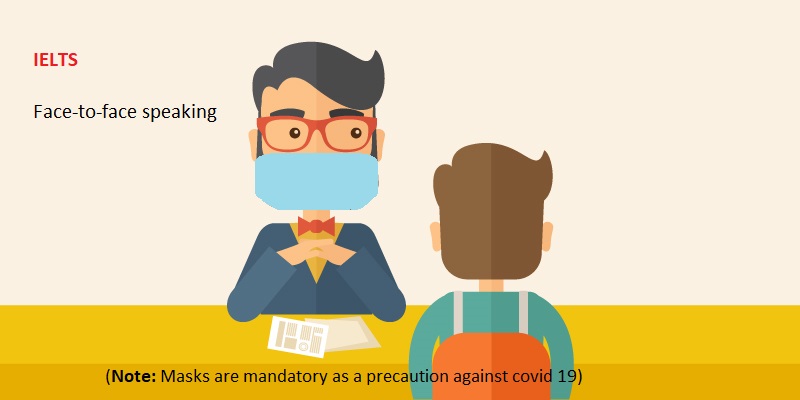

IELTS Speaking
What is IELTS Speaking?
IELTS Speaking is either a face-to-face or video call informal discussion with an IELTS examiner, and is the same for both Academic and General Training. The test is divided into 3 parts and is designed to test your pronunciation, fluency, grammar and vocabulary.
IELTS face to face speaking interview:
Face to face speaking interview takes place in an IELTS test centre, where the interview is conducted by the examiner who is present physically in the test centre.
(Image: Face to face interview)
IELTS video call speaking:
In this mode of test the speaking interview is conducted on video call. The speaking interview is conducted in an IELTS test centre. The examiners are available on a computer screen and the interview is conducted virtually.
(Image: video call speaking)
Structure of IELTS speaking
| Parts | Time | Content |
| Introduction | 4 – 5 minutes | Generic Questions |
| Cue card | 3 – 4 minutes | Topic with 4 questions |
| Discussion | 4 – 5 minutes | Remotely linked to cue card |
IELTS Speaking Parameters:
There are four scoring parameters in IELTS speaking:
1. Fluency and Coherence = = how clear and structured is your speech.
2. Lexical Resource = how good is your vocabulary.
3. Pronunciation = how naturally you sound.
4. Grammatical Range and Accuracy = how good is your grammar.
IELTS Speaking score calculation
Each of these criteria receives a score from 0 to 9 points. After that, an arithmetic mean is calculated to determine the section’s total score. For example, if your marks are: FC – 7, P – 8, LR – 7 and GR – 6, your total score will be (7+8+7+6)/4 = 7
For example, if your marks are:
- Fluency and Cohesion: 7.5,
- Pronunciation: 7.0,
- Lexical Resource: 7.0,
- Grammatical Range and Accuracy – 7.5.
Then your total score for IELTS Speaking is (7.5+7.0+7.0+7.5)/4 =7.25, which will be rounded to 7.5.






